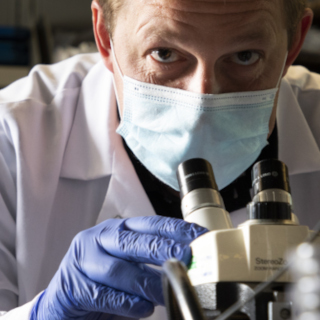Blood Collection - Rat
Date Adopted: April 10, 2018
Last date reviewed: January 15, 2021
I. General Guidelines
A. The acceptable quantity and frequency of blood sampling are determined by
the circulating blood volume and the red blood cell (RBC) turnover rate. Excessive
blood collection may result in hypovolemic shock, physiological stress and even
death.
B. For optimal health, blood draws should be limited to the lower end of the range.
Maximum blood volumes should be taken only from healthy animals.
C. The approximate blood volume of a rat is 55-70 ml/kg of body weight.
Example: for a 300-g rat this is equivalent to 17-21 ml.
II. Single Sample
A. Without fluid replacement, the maximum blood volume which can be safely
removed for a one-time sample is 10% of the total blood volume.
Example: for a 300-g rat, this is equivalent to 1.7-2.1 ml.
B. With fluid replacement, the maximum blood volume which can be safely removed
for a one-time sample is 15% of the total blood volume. Fluid replacement should
be warmed and given subcutaneously.
Example: for a 300-g rat this is equivalent to 2.5-3.2 ml.
III. Multiple Samples
A. If it is necessary to take multiple samples, smaller blood volumes are required. The
maximum blood volume that can be drawn per week is no more than 7.5% of the
total blood volume.
Example: for a 300-g rat, this is equivalent to about 1.2 – 1.6 ml per week
B. If sampling will occur every 2 weeks, up to 10% of the total blood volume may be
drawn.
Example: for a 300-g rat, this is equivalent to about 1.7-2.1 ml every 2 weeks.
Note: For repeated blood collection, fluid replacement does not allow for a larger
blood volume or more frequent blood collection.
IV. Exsanguination
A. Approximately half of the total blood volume can be collected at exsanguination.
This is approximately 8-11 ml for a 300-gram rat.
B. It is important to take into account the total blood volume yielded from the
chosen blood collection technique when calculating the frequency and volume
of blood collected. If you are not experienced in blood collection technique and
would like training contact: Kelly.Carrick@mso.umt.edu
V. Collection Sites
| Collection Site | Advantages | Disadvantages |
| Lateral Tail Vein |
Anesthesia not required |
Must be securely restrained |
| Jugular Vein |
Medium to large volumes of blood can be collected |
Does not lend to repeated samples |
| Lateral Saphenous Vein |
Anesthesia not required |
Requires specialized training |
| Cardiac Puncture |
Maximum volume of blood can be collected |
Non-survival procedure only |
